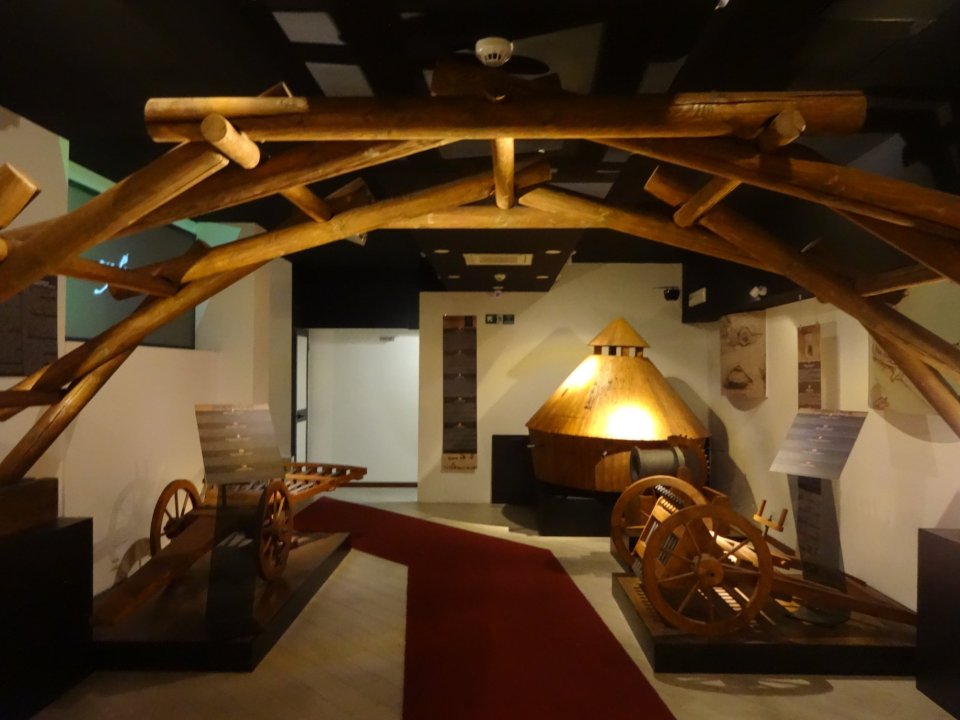
My Museo Leonardo da Vinci experience
After a long exhausting day at the Vatican, after hearing the Pope and visiting the Vatican museums, we were headed back to our hotel, when just after St Peter’s square, on the right side of the boulevard (Via della Conciliazione) I noticed a sign saying “Museo Leonardo da Vinci experience”. I usually do a thorough research of places to see when I visit a new place, but I hadn’t come across this on my online searches. Nevertheless, I always find it difficult to resist anything to do with Leonardo da Vinci and so we decided to peep in.

Leonardo da Vinci is the prime exemplar of the Renaissance Man. An individual of “unquenchable curiosity” and “feverishly inventive imagination”, he is widely considered one of the most diversely talented individuals ever to have lived. He was a polymath, whose areas of interest included invention, painting, sculpting, architecture, science, music, mathematics, engineering, literature, anatomy, geology, astronomy, botany, writing, history, and cartography. He is widely considered one of the greatest painters of all time and is sometimes credited with the inventions of the parachute, helicopter and tank. To think he did all this without access to formal education is mind boggling.
The museum can be accessed at a price of 12 euros and it comes with an audio guide. The experience was unique. For one, replicas of all of da Vinci’s masterpieces, including the Last Supper, the Mona Lisa, the Lady with the Ermine, the Vitruvian Man and John the Baptist can be seen at one place. But for me the interactive models of all the machines designed by Leonardo da Vinci were the highlight of the museum. To be able to touch and activate all the machines was fantastic.



The pen and ink drawing, depicts a man in two superimposed positions with his arms and legs apart and inscribed in a circle and square. The drawing is based on the correlations of ideal human proportions with geometry described by the ancient Roman architect Vitruvius.
Leonardo is clearly illustrating Vitruvius’ De architectura 3.1.2-3 which reads: “For the human body is so designed by nature that the face, from the chin to the top of the forehead and the lowest roots of the hair, is a tenth part of the whole height; the open hand from the wrist to the tip of the middle finger is just the same; the head from the chin to the crown is an eighth, and with the neck and shoulder from the top of the breast to the lowest roots of the hair is a sixth; from the middle of the breast to the summit of the crown is a fourth. If we take the height of the face itself, the distance from the bottom of the chin to the under side of the nostrils is one third of it; the nose from the under side of the nostrils to a line between the eyebrows is the same; from there to the lowest roots of the hair is also a third, comprising the forehead. The length of the foot is one sixth of the height of the body; of the forearm, one fourth; and the breadth of the breast is also one fourth. The other members, too, have their own symmetrical proportions, and it was by employing them that the famous painters and sculptors of antiquity attained to great and endless renown.
Similarly, in the members of a temple there ought to be the greatest harmony in the symmetrical relations of the different parts to the general magnitude of the whole. Then again, in the human body the central point is naturally the navel. For if a man be placed flat on his back, with his hands and feet extended, and a pair of compasses centred at his navel, the fingers and toes of his two hands and feet will touch the circumference of a circle described therefrom. And just as the human body yields a circular outline, so too a square figure may be found from it. For if we measure the distance from the soles of the feet to the top of the head, and then apply that measure to the outstretched arms, the breadth will be found to be the same as the height, as in the case of plane surfaces which are perfectly square.”












Inside the museum, we met Leonardo, whose family runs the museum. We were intrigued to know how he felt- that when the Vatican honours the work of Michelangelo and Raphael, a memorial to the Tuscan genius, da Vinci, also needed to be in the vicinity. I told Leonardo how much we admired da Vinci’s work in medicine too— and hopefully some day this museum will also include anatomical drawings by this genius.
Share this:
- Click to share on Twitter (Opens in new window)
- Click to share on Facebook (Opens in new window)
- Click to print (Opens in new window)
- Click to share on WhatsApp (Opens in new window)
- Click to share on Tumblr (Opens in new window)
- Click to share on Pinterest (Opens in new window)
- Click to email this to a friend (Opens in new window)



